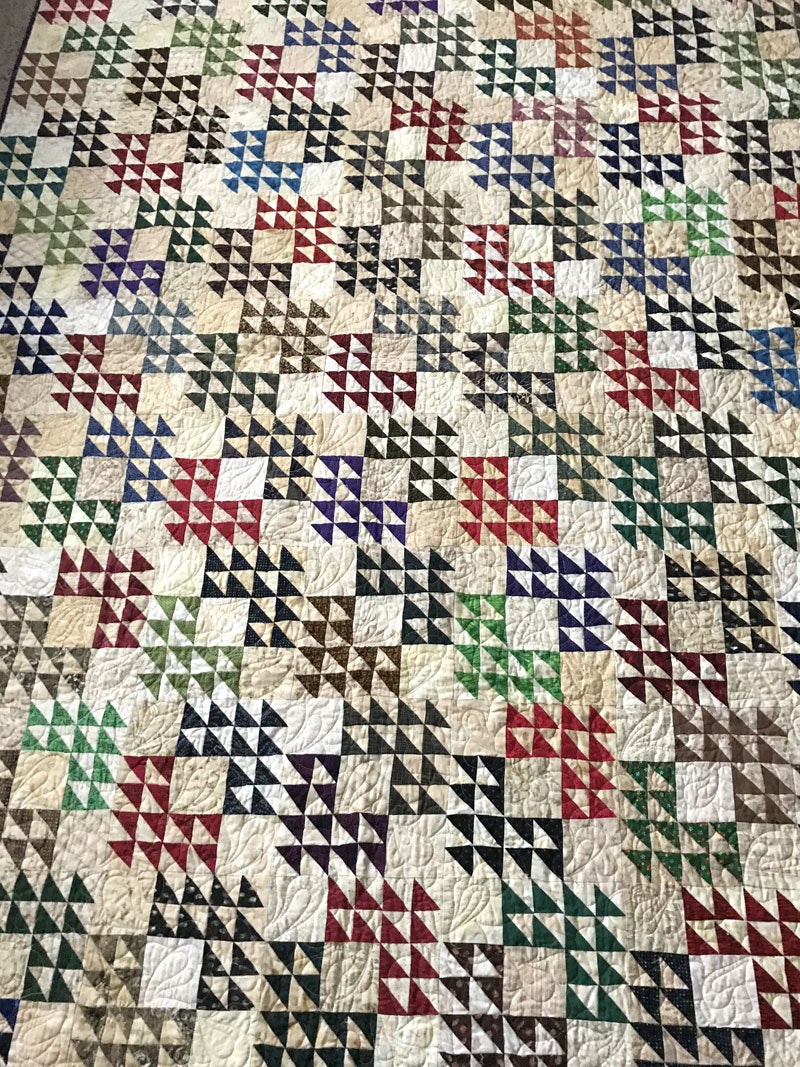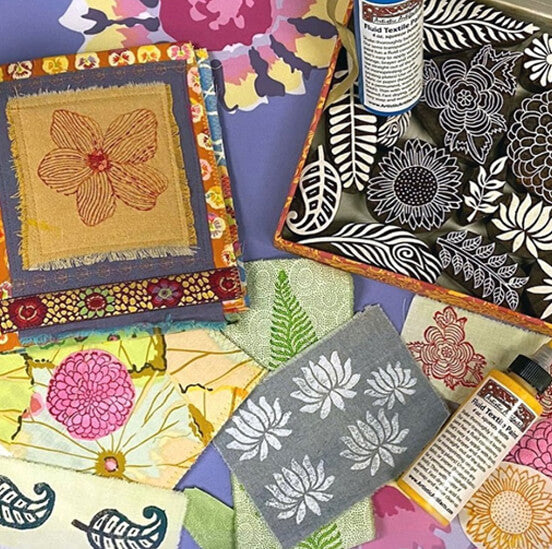Block Selection for Beginning Quilting

We asked Artistic Artifacts’ staff member and instructor Elizabeth “Dudley” Shugart to explain what skills are learned with her block choices for her Beginning Quilting class. (The next session begins February 1 at the shop — join us!) Thank you for your guest post, Dudley!
My goal in teaching beginner quilting is that a student learns the process of making a quilt from start to finish. Learning to quilt is like learning to write. That first quilt will be a sampler of learned techniques and will be beautiful, but likely not perfect. A true heirloom quilt can be made with additional practice and experience.

Cozy is a sampler project included in FreeSpirit Block Party -- it features both the Solitaire and Compass quilt blocks that are taught in our beginning quilting class.
I have chosen the book FreeSpirit Block Party: 40 Quilt Blocks, 5 Samplers, 20 Modern Designers to use as our text and instruction manual and each student is required to purchase the book. Created as the result of a partnership between C&T Publishing and FreeSpirit Fabrics, this book features a number of their designers and a wonderful array of quilt blocks to choose from. My class is structured into four different sessions:
- For the first class I choose three blocks for the students to make.
- The second class additional techniques are taught, then the student chooses blocks they would like to make to add into their sampler quilt.
- Session three is taking the blocks and putting them together in a quilt top.
- The last class is preparing to machine quilt, start machine quilting and lessons in how to bind.

After finishing all four sessions, each student has a completed quilt and can branch out into making more complex and interesting quilts.
The first block I selected is Derailed, contributed by Jane Sassaman. This block is and ideal one for teaching students how to rotary cut strips, as well as how to sew longer strips together, checking their sewing and seam allowances. Selecting three fabric that each student likes together is an easier decision for them to make before they move on to more complex blocks that require multiple fabric choices.
The second block I chose is Spun by Margot Elena. The reason for this selection is to introduce large squares and triangles. If you want your quilt to piece together so the top is flat, precision cutting is the key. We discuss how important grain and bias are while cutting squares and triangles. Students also learn pressing tips to make the intersections of the pieces go together so that the seams match.

Previous student from Artistic Artifacts' beginning quilting class taught by Dudley Shugart preparing her completed top for quilting
To finish out the first class I introduce the Solitaire Block, contibuted by Heather Bailey. We discuss fabric selection, as we have now moved on to a block with seven different fabrics. Cutting and pressing skills are also emphasized again.
Class two then brings on two more techniques as we construct two additional blocks, Snowbank by Denyse Schmidt and Compass by Sharon Thornton. While stitching the Snowbank block, I teach how to piece the triangle corner. The Compass block introduces the paper piecing technique.
I encourage students to let me know if they find a block they absolutely want to try within the classs structure. I am always happy to teach other techniques, tips and tricks as they make their sampler of blocks.
For my example quilt, I choose Corsage by Kerri Thomson and Sunset by Joel Dewberry (center of quilt) as the final blocks to complete my sampler. I choose Corsage to bring in more squares and triangles. (I wonder if anyone noticed my quilt is not perfect — I made the center a star. The flowered piece is pointing the wrong way. Oh my!)
Sunset was added after my daughter Ashley and I decided the quilt would look better with an odd number of blocks. I choose Sunset because it is one of my favorite blocks. In fact, as shown below I have made an entire quilt using this block only.

I tell all of my students there is no such thing as the quilt police! But fair warning if you take any of my classes: my one and only rule is you must close your rotary cutter after each use!
Editor's note: Did you know that all C&T Publishing proceeds from the sale of FreeSpirit Block Party go to Project Night Night? Project Night Night delivers 25,000 Night Night Packages each year to homeless children 12 and under. Each contains a new security blanket, an age- appropriate children’s book, and a stuffed animal — all nestled inside of a new canvas tote bag. The aim is to give children an increased exposure to high-quality literacy materials and a source of security during their time of upheaval.
Below, Neighbors, a quilt sampler project also included in FreeSpirit Block Party.








Leave a comment